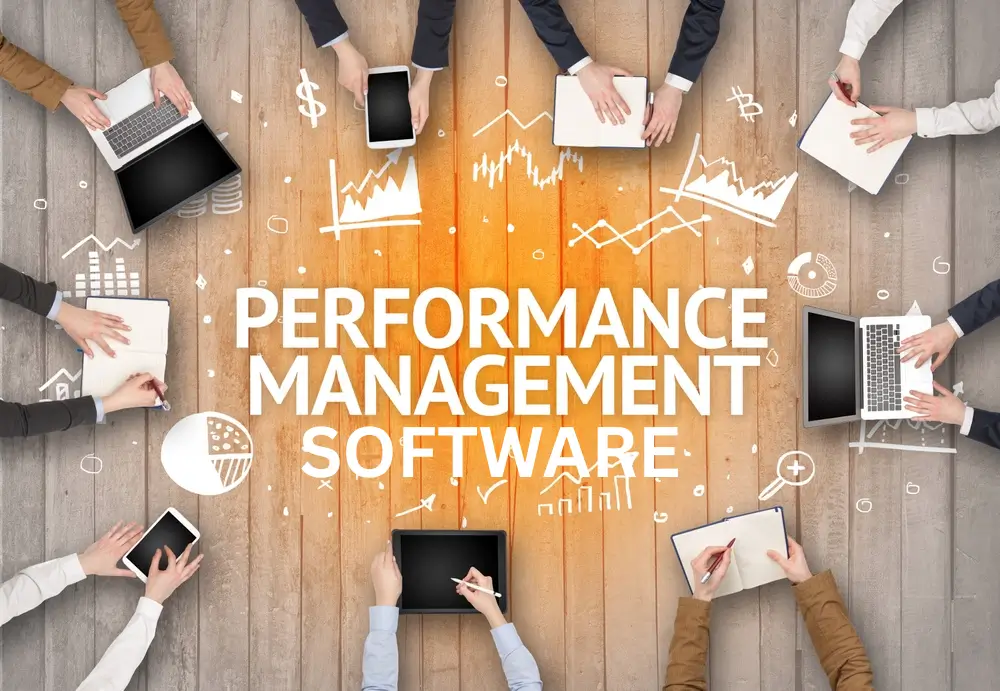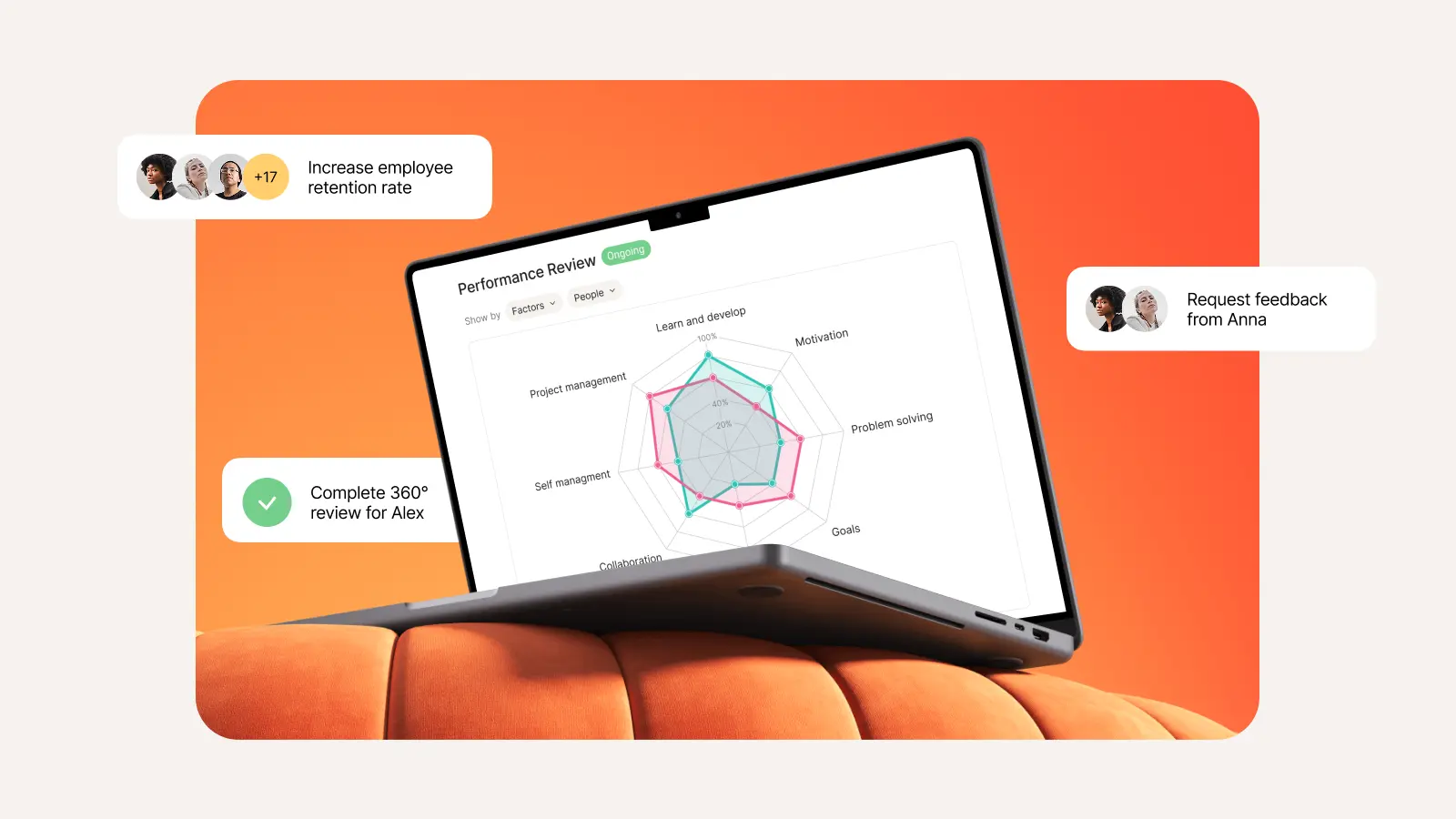What is Performance Management Software?

When a company grows, tracking employees’ performance manually becomes impossible. As a result, employee tracking becomes difficult, feedback between managers and employees is often delayed, and managing performance reviews and improvement plans is also often done unfairly. If you are struggling with such types of challenges, then choosing the right performance management system can help you manage all these tasks in one place.
Performance management software is a tool specifically designed to manage, monitor, and improve employee performance. Instead of relying on outdated annual review cycles, you can save your time on manual tracking and improve team productivity by automating your task through it.
How does performance management software work?
The purpose of this software is to improve employee performance. It understands employees’ work through data, communicates with them, and sets clear goals that they can easily achieve. Through this, it enhances employees’ performance.
Here’s a step-by-step look at how it typically works:
- Goal setting: Employees and managers often use frameworks like SMART or OKRs to set clear and measurable objectives.
- Progress tracking: The software offers visibility to both employees and managers by monitoring progress in real time.
- Ongoing feedback: It supports continuous communication through regular check-ins, feedback tools, and pulse surveys.
- Performance reviews: At scheduled intervals, the platform streamlines formal reviews by compiling feedback, ratings, and progress data.
- Actionable insights: Managers can use built-in analytics to identify strengths, address skill gaps, and recognize high performers.
What are the key features of a performance management system?
Performance management tools offer a wide range of powerful features. Below are the top features that make these platforms essential for modern HR and leadership teams.
- Goal and objective setting
- Continuous feedback tools
- Performance reviews
- Real-time performance tracking Analytics and reporting
- Employee development planning
- Recognition and rewards
- Integration with other HR systems
Want to see which tools offer these features? Explore our curated list of best performance management software in the UK for 2025 with pricing and features compared.
Benefits of performance management software
Investing in a performance management tool can provide a number of benefits to your business as well as employees and managers. Revenue can be increased due to an increase in productivity. Following are some key benefits discussed in detail:
Improved Goal Clarity
Goals are one of the key metrics of performance management. With clear goals and objectives, you can reduce the confusion and see clear and constructive progress from employees.
Increased Productivity
With regular feedback and progress tracking, you can increase productivity because employees stay motivated, and it also results in an increase in revenue.
Enhanced Employee Engagement
When employees see their progress and milestones they have achieved on their personal dashboard, it increases engagement. With clear goals and regular feedback, employees feel more engaged and this also improves communication and team morale.
Identifies Training Needs
Training helps both businesses and employees. It helps employees to learn new skills and boost engagement. By identifying the skill gaps, you can close those gaps through targeted training.
Fair and Transparent Appraisals
With performance appraisal software, data can be tracked in one place, and appraisals become more transparent and fair, reducing the chances of inconsistent reviews.
Simplified Processes
This software automatically generates performance reviews and reports, and as a result, it reduces the manual workload for managers, and they can focus on leadership.
Identifies Risks Early
Sometimes, critical issues like employee conflict, missed deadlines, or mental health struggles are ignored. These can severely impact the business, but if you have performance management software, they can be identified earlier.
Who uses performance management software?
This software is suitable for every size of business. Whether it is a startup or a large organization, every business needs it. From employees to leadership, everyone can benefit from it. For example, employees can see their goals clearly and track performance, the same as HR managers can set goals for employees and leadership can use performance data for strategic analysis.
Conclusion
Using outdated methods to track and improve employee performance can create hurdles for your organization. Repetitive manual tasks take more time, and managers cannot focus on leadership, which ultimately affects productivity.
By using Zelt’s performance management and appraisal software, you can enhance employee performance more effectively. It provides an all-in-one solution through which you can set goals, monitor progress, and continuously develop your workforce. Whether you are just a startup or a large organization, businesses of all sizes can use this tool to boost productivity and employee performance.
Frequently Asked Questions
What is a 360 feedback assessment?
A 360-degree feedback assessment (also known as multi-source or multi-rater feedback assessment) is a process in which employees receive anonymous or confidential feedback from the people they work with.
How does performance management software improve productivity?
The software saves time for managers by automating tasks like goal tracking and performance reviews.
Can small businesses use performance management software?
Yes, businesses of all sizes can use performance management tools to boost productivity.



